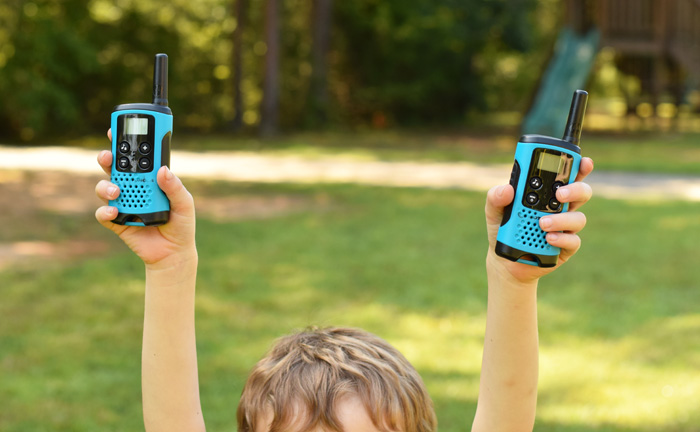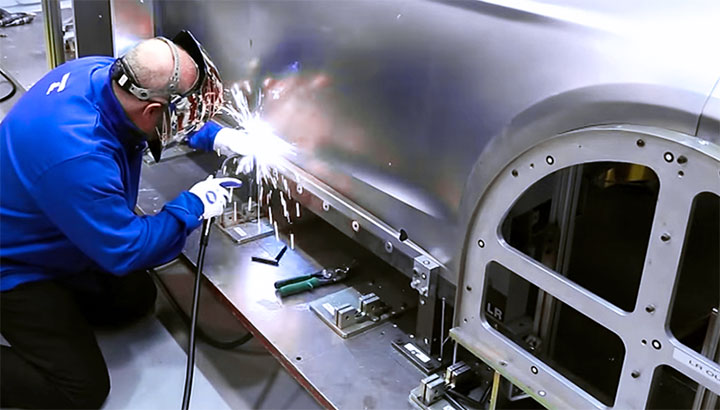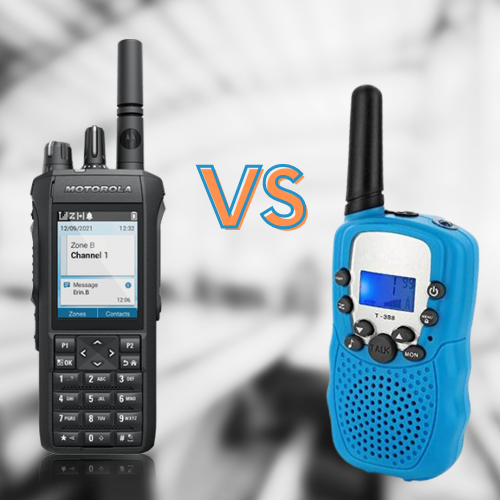Why, it’s all three! How it this possible? First, Let’s discuss a bit of history. The walkie-talkie, more formally known as a handheld transceiver, is a hand-held, portable, two-way radio transceiver. It was developed during the Second World War and it has been variously credited to Donald Hings, radio engineer Alfred J. Gross, Henryk Magnuski and engineering teams at Motorola. The term “Walkie Talkie” originated back in WW II when Motorola developed a back pack radio that a soldier could carry and talk while he walked. It’s a beloved term with really cool history. Later, Motorola developed a small unit that could be held in your hand.
So while the term walkie-talkie still refers to portable devices, there are some key differences you should know about. While they may appear similar at first glance, there are fundamental differences that set apart a basic walkie talkie to one with advanced features, ruggedness and and overall use. In this blog post, we’ll explore the dissimilarities between radios and basic walkie-talkies to help you better understand their unique features and applications.

Communication Coverage Range
First off, let’s talk about the range. Hand radios are the go-to choice when you need long-distance communication. They can cover several miles or even more, especially if they connect to repeater stations. Walkie-talkies, on the other hand, are more for short-range stuff. You’re looking at a few miles, give or take. Walkie-talkies don’t use repeaters. This is one of the primary distinctions between radios and walkie-talkies – their transmission ranges. Radios are typically designed for long-range communication, covering distances of several miles or even farther. They operate on specific frequency bands and can often connect to repeater stations to extend their range. On the other hand, walkie-talkies are designed for short-range communication, generally within a few miles. They rely on direct communication between devices without the use of repeaters.

Power Sources
Now, let’s discuss power sources. Another notable difference between radios and walkie-talkies is their power source. Two way radios usually run on longer lasting batteries or are plugged into a power source. They can have bigger battery capacities for much longer battery life. Walkie-talkies, on the flip side, are all about portability. They’re only battery-powered and don’t have the long battery life a radio does, they are however lightweight, and designed to be carried around easily.
Portability
Speaking of portability, walkie-talkies take the crown in that department. They’re compact and fit right in your hand. Perfect for camping and other type of light use. As mentioned earlier, walkie-talkies are known for their compact size and portability. They are designed to be handheld and easily carried around, enabling seamless communication on the move. Walkie-talkies are frequently utilized in for outdoor adventures where convenience and mobility are key factors. Conversely, handheld radios tend to be larger in size, often requiring additional equipment such as antennas and external speakers. They are commonly used in commercial entities such as manufacturing, transportation and aviation. Purpose-built, mission critical radios are commonly used for local government, police and fire operations.

Features and Options
Now, let’s talk features. Radios come loaded with cool stuff like multiple channels, scanning abilities, and encryption. They can even connect to external devices like headsets or mics. They’re really built for professionals who need specific communication options. Walkie-talkies, though, keep it simple. They have a few channels, basic features like push-to-talk, volume control, and built-in speakers, but they are not meant to withstand the day to day commercial use, they don’t have the range, they don’t have the ruggedness or the extra loud audio to perform in a commercial professional environment, such as universities, airports, and stadiums.

Cost
Finally, cost. Radios are sometimes a bit pricier. Since they offer advanced features, a wider range, and professional-grade quality, radios will cost a bit more. Walkie-talkies, being more consumer-friendly, are generally more affordable but again are limited to their performance in commercial settings compared to radios.

So, there you have it! Radios and walkie-talkies may seem similar, but they have their own specialties and applications. If you are in need of a commercial device that offers long-distance communication with all the bells and whistles, will last and perform in commercial environments then a handheld radio is the right choice. But if you want something portable, simple for short distances to use in applications like light outdoor activities, grab a walkie-talkie. Choose wisely and happy communicating!

Contact us for a free consultation for your company radios, let us understand your needs and see how Motorola 2-way radios can help improve your Florida commercial operations.






